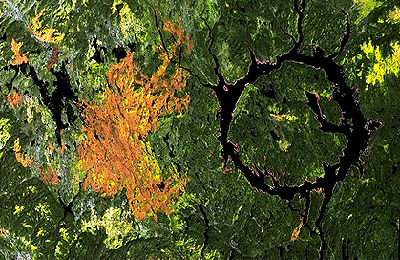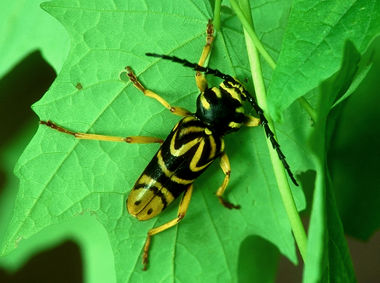Article
Immunology
Immunology is a branch of MEDICINE that studies the body's ability to defend itself from foreign substances, cells and tissues, especially DISEASE-causing organisms, and seeks means of controlling that ability.

Enter your search term
Signing up enhances your TCE experience with the ability to save items to your personal reading list, and access the interactive map.
Create AccountArticle
Immunology is a branch of MEDICINE that studies the body's ability to defend itself from foreign substances, cells and tissues, especially DISEASE-causing organisms, and seeks means of controlling that ability.
"https://development.thecanadianencyclopedia.ca/images/tce_placeholder.jpg?v=e9dca980c9bdb3aa11e832e7ea94f5d9" // resources/views/front/categories/view.blade.phphttps://development.thecanadianencyclopedia.ca/images/tce_placeholder.jpg?v=e9dca980c9bdb3aa11e832e7ea94f5d9

Article
The solar system contains many objects smaller than the planets (or their satellites) travelling in individual orbits about the SUN; space between the planets also contains myriad dust grains in the micron size range. Near Earth, dust concentrations are only a few hundred particles per cubic kilometre, but 35 000 to 100 000 t of extraterrestrial material enters the atmosphere annually, swept up by our planet from debris that is in its path or crosses its path.
"https://d2ttikhf7xbzbs.cloudfront.net/media/media/66e2415e-3179-44e5-a06b-e73edf3aa050.jpg" // resources/views/front/categories/view.blade.phphttps://d2ttikhf7xbzbs.cloudfront.net/media/media/66e2415e-3179-44e5-a06b-e73edf3aa050.jpg

Article
Industrial ARCHAEOLOGY is a type of interdisciplinary history that promotes understanding of the industrial era by focusing on physical remains, whether above ground or below, and by combining the insights of fieldwork and historical research.
"https://development.thecanadianencyclopedia.ca/images/tce_placeholder.jpg?v=e9dca980c9bdb3aa11e832e7ea94f5d9" // resources/views/front/categories/view.blade.phphttps://development.thecanadianencyclopedia.ca/images/tce_placeholder.jpg?v=e9dca980c9bdb3aa11e832e7ea94f5d9

Article
The major early developments in industrial design occurred in continental Europe, principally England, Germany and Scandinavia.
"https://d2ttikhf7xbzbs.cloudfront.net/media/media/d5e6c87c-7a50-418f-af6e-a5558582b230.jpg" // resources/views/front/categories/view.blade.phphttps://d2ttikhf7xbzbs.cloudfront.net/media/media/d5e6c87c-7a50-418f-af6e-a5558582b230.jpg

Article
Industrial Quality Control uses scientific techniques to determine product and service capabilities, to enable an organization to economically provide a product or service suitable for its intended purpose.
"https://development.thecanadianencyclopedia.ca/images/tce_placeholder.jpg?v=e9dca980c9bdb3aa11e832e7ea94f5d9" // resources/views/front/categories/view.blade.phphttps://development.thecanadianencyclopedia.ca/images/tce_placeholder.jpg?v=e9dca980c9bdb3aa11e832e7ea94f5d9

Article
Technological innovation is essential for economic growth and for the improvement of the quality of life. Industrial research and development (R & D) is at the heart of the innovative process.
"https://development.thecanadianencyclopedia.ca/images/tce_placeholder.jpg?v=e9dca980c9bdb3aa11e832e7ea94f5d9" // resources/views/front/categories/view.blade.phphttps://development.thecanadianencyclopedia.ca/images/tce_placeholder.jpg?v=e9dca980c9bdb3aa11e832e7ea94f5d9

Article
Influenza, often referred to as the flu, is a common, contagious respiratory illness. There are four types of influenza viruses: A, B, C and D. While influenza A, B and C viruses can infect humans, influenza D is believed to primarily affect animals such as cattle and pigs. Influenza C is rare in comparison to influenza A and B, which are the main sources of the “seasonal flu,” or the viruses that circulate in Canada and other countries each winter. Influenza A is also the source of flu pandemics. Canada has experienced five influenza pandemics since the late 19th century, in 1890, 1918, 1957, 1968 and 2009. In Canada, influenza causes an estimated 12,200 hospitalizations and 3,500 deaths each year.
"https://d2ttikhf7xbzbs.cloudfront.net/media/media/73780e73-cf0f-4654-b6da-da083ddb6c53.jpg" // resources/views/front/categories/view.blade.phphttps://d2ttikhf7xbzbs.cloudfront.net/media/media/73780e73-cf0f-4654-b6da-da083ddb6c53.jpg

Article
Communications technologies include the techniques, tools and methods used to facilitate communication. Information technologies include those used to create, record, modify and display the content being communicated.
"https://d2ttikhf7xbzbs.cloudfront.net/media/media/528dd8b2-60b3-4853-9b1a-8c6731b71fe4.jpg" // resources/views/front/categories/view.blade.phphttps://d2ttikhf7xbzbs.cloudfront.net/media/media/528dd8b2-60b3-4853-9b1a-8c6731b71fe4.jpg

Article
Information Highway is a term attributed to former American vice-president Al Gore in the 1990s and refers to the delivery of digital media over high-speed networks.
"https://development.thecanadianencyclopedia.ca/images/tce_placeholder.jpg?v=e9dca980c9bdb3aa11e832e7ea94f5d9" // resources/views/front/categories/view.blade.phphttps://development.thecanadianencyclopedia.ca/images/tce_placeholder.jpg?v=e9dca980c9bdb3aa11e832e7ea94f5d9

Article
Information SocietyFor many writers, pundits and policy makers the rapid development and diffusion of INFORMATION AND COMMUNICATIONS TECHNOLOGIES (ICT) heralds the development of a new kind of society - a society where the production and exchange of information is a key feature in both the economy and social life in general. While the first half of the 20th century saw the dominant form of economic production shift from agricultural to industrial, the second half was...
"https://development.thecanadianencyclopedia.ca/images/tce_placeholder.jpg?v=e9dca980c9bdb3aa11e832e7ea94f5d9" // resources/views/front/categories/view.blade.phphttps://development.thecanadianencyclopedia.ca/images/tce_placeholder.jpg?v=e9dca980c9bdb3aa11e832e7ea94f5d9

Article
Some 2000 Canadians between the ages of one and 19 are killed each year because of injury, and over 85 000 are hospitalized. With the control of infectious diseases, injury has become the leading cause of death and disability in Canadian children and youth.
"https://development.thecanadianencyclopedia.ca/images/tce_placeholder.jpg?v=e9dca980c9bdb3aa11e832e7ea94f5d9" // resources/views/front/categories/view.blade.phphttps://development.thecanadianencyclopedia.ca/images/tce_placeholder.jpg?v=e9dca980c9bdb3aa11e832e7ea94f5d9

Article
The Armand-Frappier Santé Biotechnologie Research Centre, is part of the Institut national de la recherche scientifique (INRS). It is an important centre for research, training and technology transfer (see Medical Education).
"https://development.thecanadianencyclopedia.ca/images/tce_placeholder.jpg?v=e9dca980c9bdb3aa11e832e7ea94f5d9" // resources/views/front/categories/view.blade.phphttps://development.thecanadianencyclopedia.ca/images/tce_placeholder.jpg?v=e9dca980c9bdb3aa11e832e7ea94f5d9

Article
A classification system acts as an efficient storage mechanism for information about each taxon or group.
"https://d2ttikhf7xbzbs.cloudfront.net/media/media/62afc23f-dc49-4bc6-b03e-a1421aa6133e.jpg" // resources/views/front/categories/view.blade.phphttps://d2ttikhf7xbzbs.cloudfront.net/media/media/62afc23f-dc49-4bc6-b03e-a1421aa6133e.jpg

Article
Insects and humans cohabit the Earth and have developed complex relationships. Insect pests (less than 1% of all species) are those insects that feed on, compete for food with, or transmit diseases to humans and livestock.
"https://d2ttikhf7xbzbs.cloudfront.net/media/media/88c46837-1cef-4dd5-bc79-91bc360366f2.jpg" // resources/views/front/categories/view.blade.phphttps://d2ttikhf7xbzbs.cloudfront.net/media/media/88c46837-1cef-4dd5-bc79-91bc360366f2.jpg

Article
Insulin is the most potent hormone of fuel storage, affecting carbohydrate, fat and protein throughout the body. Acting through binding to receptors on cell membranes, the principal targets of insulin are in liver, fat and muscle.
"https://d2ttikhf7xbzbs.cloudfront.net/media/media/3397863a-6372-4f8a-ab74-c374b015f1b2.jpg" // resources/views/front/categories/view.blade.phphttps://d2ttikhf7xbzbs.cloudfront.net/media/media/3397863a-6372-4f8a-ab74-c374b015f1b2.jpg
